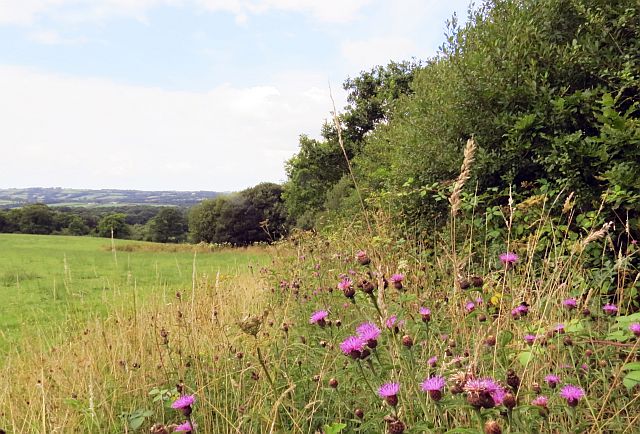
Herb-rich hedge margin, Dillings, Locks Park – Rob Wolton
In workshop 4 we heard that whilst grassland soils represent a large and valuable carbon stock their ability to sequester additional carbon may be limited if they are already at or near their carbon equilibrium. As such, alternative land use and management may be necessary if our goal is to maximise additional carbon sequestration from this land. In this, the second of our workshops on natural carbon sinks, we looked at the potential of trees, hedges, and perennial bioenergy crops to sequester and store carbon on-farm.
We heard about opportunities and support available to create new woodland in the Ruby Country, how hedgerow management can be adapted to maximise carbon storage, how trees can be integrated alongside grazing to create sylvopasture within the Ruby Country and the potential of perennial bioenergy crops to contribute towards net-zero targets.
- Agenda
- Presentation 1: Woodland Carbon (Jon Burgess, Forestry Commission)
- Presentation 2: Sylvopasture (Ben Raskin, Soil Association)
- Presentation 3: Hedge Carbon (Matt Axe, Devon Hedge Group)
- Presentation 4: Bioenergy Crops (Will Macalpine, Rothamsted Research)

